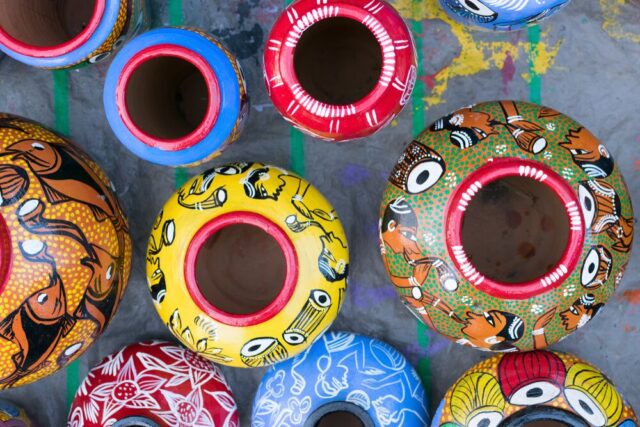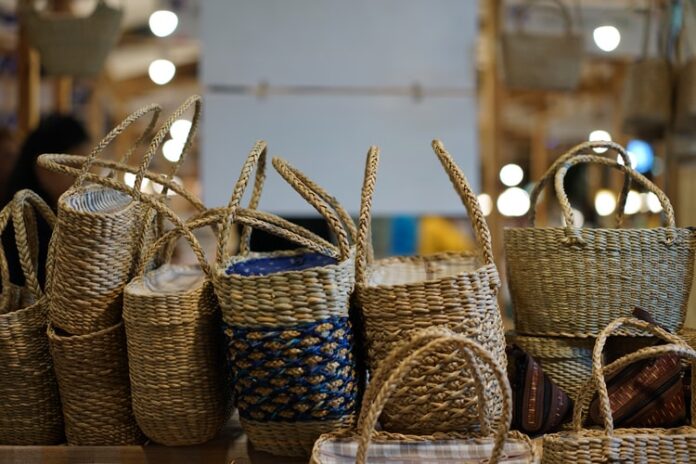Agra is renowned for its rich heritage in handicrafts, including marble inlay work, leather goods, rugs, jewelry, and the famous Petha sweets. As global demand for handmade and artisanal goods grows, Agra’s handicraft businesses have an incredible opportunity to expand their reach through e-commerce websites. An effective e-commerce website can help local artisans and sellers showcase their products to a global audience, driving sales while preserving Agra’s cultural heritage.
Here’s a step-by-step guide on how to create e-commerce websites for Agra’s handicraft businesses:

Table of Contents
Toggle1. Identify the Business Goals and Target Audience
Before starting the website development process, it’s essential to define your business objectives and identify the target audience. Ask yourself the following questions:
- What are the key goals of the e-commerce website? (e.g., increasing sales, reaching international customers, showcasing craftsmanship)
- Who is the target audience? (e.g., local buyers, international customers, tourists)
- What type of products will be sold? (e.g., marble inlay work, leather goods, textiles)
By understanding the target audience and business goals, you can tailor the website design and marketing strategy to better meet the needs of potential customers.
2. Choose an E-commerce Platform
Selecting the right e-commerce platform is critical to the success of your website. The platform should be easy to manage, secure, and customizable. Some of the most popular e-commerce platforms include:
- Shopify: Ideal for small and medium-sized businesses, Shopify offers an easy-to-use interface, customizable templates, and built-in features for managing inventory and payments.
- WooCommerce: A plugin for WordPress, WooCommerce is a great option for businesses looking for more control over website customization. It’s cost-effective and highly flexible.
- BigCommerce: Known for scalability, BigCommerce is suited for businesses with growing inventories. It provides robust features and is easy to integrate with other tools.
Each platform has its own strengths, so choose the one that best fits your budget, scale, and customization needs.
3. Design the Website to Reflect Agra’s Handicraft Heritage
The website design should capture the essence of Agra’s rich cultural heritage and craftsmanship. Focus on creating a visually appealing and user-friendly interface that reflects the uniqueness of the products. Design considerations include:
- Branding: Use colors, fonts, and imagery that reflect the authenticity of Agra’s handicraft traditions. For example, marble inlay work and intricate patterns could inspire the design motifs of the website.
- Product Photography: High-quality images of products are essential for e-commerce success. Invest in professional photography to showcase the fine details of the handicrafts, such as the marble inlay patterns or the texture of the leather goods.
- Storytelling: Incorporate storytelling elements into the design by including sections about the history of the handicraft business, the artisans, and the significance of the products. This connects emotionally with customers and adds value to the products.
4. Create a Comprehensive Product Catalog
The product catalog is the core of your e-commerce website. Ensure that it is detailed, well-organized, and informative to help customers make informed purchasing decisions. Key elements to include in the catalog are:
- Product Descriptions: Write compelling and accurate product descriptions that highlight the craftsmanship, materials used, and cultural significance of each item.
- Product Variations: If your handicrafts come in different colors, sizes, or designs, provide options for customers to choose from.
- Pricing: Display transparent pricing, including any additional costs such as shipping or taxes. For international customers, offer currency conversion features to simplify the shopping experience.
- Filters and Categories: Organize products into categories (e.g., marble items, leather products, jewelry, textiles) and provide filters for easy navigation (e.g., price range, product type, size).
5. Implement Secure Payment and Shipping Options
A smooth checkout process is vital for ensuring customer satisfaction and preventing abandoned carts. Key features to implement include:
- Multiple Payment Gateways: Offer a variety of secure payment methods, including credit/debit cards, net banking, and digital wallets like PayPal or Razorpay. For international customers, ensure the payment system supports multiple currencies.
- Secure Transactions: Implement SSL (Secure Sockets Layer) certificates to encrypt data and protect customer information, building trust in the website.
- Shipping and Delivery: Provide reliable and affordable shipping options. Partner with local and international couriers to ensure timely deliveries. Offer delivery tracking and notifications to keep customers updated on the status of their orders.
6. Optimize for Mobile Users
With the increasing use of smartphones for online shopping, it’s essential to ensure that your e-commerce website is mobile-friendly. A mobile-optimized website improves user experience and can significantly boost sales. Consider the following:
- Responsive Design: Ensure the website layout adapts seamlessly to different screen sizes and devices.
- Fast Loading Times: Mobile users are likely to abandon websites that take too long to load. Optimize images, reduce unnecessary elements, and use content delivery networks (CDNs) to improve loading speed.
- Simple Navigation: Ensure the mobile version of your site has easy navigation, large buttons, and minimal pop-ups to facilitate a smooth shopping experience.
7. Focus on SEO and Local Marketing Strategies
Search engine optimization (SEO) is critical for driving organic traffic to your e-commerce website. By optimizing your site for search engines like Google, you can attract more potential customers. Focus on the following:
- Keyword Optimization: Use keywords related to your products, such as “Agra marble inlay,” “handcrafted leather bags,” or “buy Petha online,” in your product descriptions, blog posts, and meta tags.
- Local SEO: Ensure that your business is listed on Google My Business and other local directories. Include location-based keywords like “handicrafts from Agra” or “buy Agra souvenirs” to attract both local and tourist traffic.
- Content Marketing: Create blog posts or videos showcasing the craftsmanship, history, and cultural significance behind each product. This helps drive traffic through content that appeals to potential customers.
8. Leverage Social Media for Promotion
Social media platforms like Instagram, Facebook, and Pinterest are ideal for promoting handicraft products, given their visual nature. Here’s how to use social media to your advantage:
- Instagram Shopping: Set up an Instagram Shop where users can view and purchase products directly from your posts and stories.
- Influencer Marketing: Collaborate with local influencers or artisans to showcase your products to their followers, building credibility and expanding your reach.
- Engaging Visual Content: Share behind-the-scenes videos of artisans working, product-making processes, or customer testimonials to build authenticity and engagement with potential customers.
9. Offer Customer Support and Build Trust
Trust is vital in e-commerce, especially for handmade products like those in Agra’s handicrafts market. Build credibility through strong customer support and transparency:
- Live Chat and Customer Support: Offer live chat or 24/7 customer support to assist customers with their queries or help them navigate the website.
- Product Reviews: Encourage customers to leave reviews of the products they’ve purchased. Positive testimonials build trust with new visitors.
- Return and Refund Policies: Clearly state your return and refund policies to make customers feel confident when shopping.
10. Analyze and Optimize
Once the website is live, continuously monitor its performance to identify areas for improvement. Use analytics tools like Google Analytics to track traffic, sales conversions, and customer behavior. Key metrics to watch include:
- Traffic Sources: Understand where your visitors are coming from, whether it’s organic search, social media, or referral websites.
- Conversion Rates: Measure the percentage of visitors who complete a purchase. If conversions are low, assess whether pricing, checkout flow, or product descriptions are barriers.
- User Behavior: Track how users interact with your website. If users are abandoning their carts, consider improving the checkout process or offering incentives like free shipping.
Conclusion
Building an e-commerce website for Agra’s handicraft businesses can open up a global market for local artisans and sellers. By choosing the right platform, creating a visually appealing design, focusing on secure transactions, and leveraging SEO and social media, you can create an engaging and successful online presence. In doing so, Agra’s rich handicraft traditions can continue to thrive, benefiting both the artisans and their customers around the world.


No responses yet